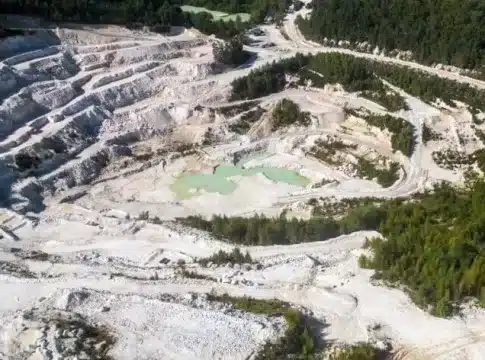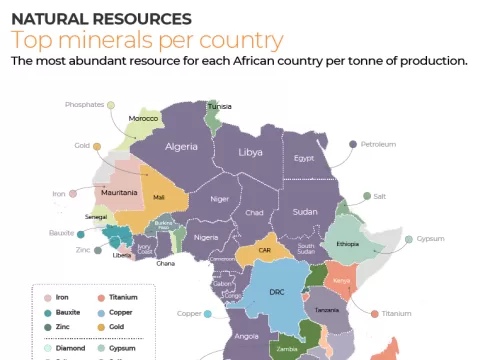Global Lithium Reserves and Resources Surge 52% in Q1 2024
The global lithium industry witnessed significant growth in reserves and resources during the first quarter of 2024, surging to 303.5 million metric tons, a remarkable 52.2% increase compared to the same period in 2021, per S&P Global Commodity Insights.
This uptrend aligns with the 2023 trajectory, where lithium reserves and resources expanded by 36.9 million metric tons. Despite this surge, lithium prices experienced fluctuations. While they soared to historic highs in 2022, reaching $79,650 per metric ton in China, they have since cooled down, resting at $15,250 per metric ton as of April 17, 2024.
Nonetheless, experts suggest a prevailing upward trajectory in lithium demand and prices since 2016. However, short-term challenges such as recent price corrections and surpluses in battery metals have been noted.
RELEVANT: Why Lithium Prices are Plunging and What to Expect
Still, medium-term supply deficits are anticipated to sustain interest in lithium exploration despite these fluctuations.
Mining Titans: Global Lithium Reserves Unearthed
Geographically, Argentina emerges as the global leader in lithium reserves and resources, contributing 29.6% in the Q1 of 2024. The United States comes second at 24.0% and followed by Bolivia at 18.2%.
Meanwhile, Australia, renowned as the top lithium producer globally, possesses 22.1 million metric tons of reserves and resources, securing the 6th position in global rankings.
Remarkably, Canada has shown substantial growth in its lithium sector. Its share of reserves and resources increase by 273.1% since Q1 of 2019, amounting to 28.2 million Mt in Q1 of 2024. This growth is underpinned by a surge in lithium exploration budgets, which spiked by 120% in 2023, marking the third consecutive year of expansion.
Canada, especially Quebec, is displaying a strong enthusiasm for the lithium and battery sectors. The country focuses on establishing a complete supply chain from mining to electric vehicle (EV) production.
Jean-François Béland, Ressources Québec’s Vice President, highlighted the imperative of car electrification, noting the demand will be there, whatever happens. He further stated that “lithium and critical minerals are, in the 21st century, what coal was in the 19th century and what oil was in the 20th century.”
Lithium’s Role in the EV Revolution
According to the S&P Global Commodity data, lithium-ion battery capacity is projected to reach 6.5 TWh by 2030. Lithium is recognized as a crucial component in manufacturing EVs and is considered the cornerstone of achieving net zero emissions.
The demand for lithium-powered EV batteries is anticipated to grow annually at a rate exceeding 22%. And the EV transport segment will capture 93% of the market share by 2030.
In response to the challenges posed by the pandemic and geopolitical tensions, companies are adopting these strategies to cope:
Reevaluating undeveloped lithium assets,
Expediting projects, and
Exploring new opportunities.
This trend has been further fueled by national government policies that advocate for energy transition and support battery supply chains.
The global lithium exploration arena has also witnessed significant financial inflows. Exploration budgets skyrocketed to a historic high of $830 billion in 2023, marking a 77% increase.
Notably, four countries—Australia, Canada, Argentina, and the United States—each allocated over $100 million for lithium exploration in 2023. Collectively, they represent almost 75% of the global lithium exploration budgets for the year.
Looking ahead, projections indicate further expansion in lithium production. China expected to capitalize on lower-quality deposits and Bolivia is poised to elevate its status as a formidable lithium producer, leveraging its substantial lithium reserves of 39.0 million metric tons.
Balancing Demand and Production
In a separate report by Benchmark’s Solid-State and Lithium Metal Forecast, the global lithium metal production struggles to keep pace with the surging demand. The sector encounters challenges in securing sufficient lithium metal for battery manufacturing, despite its substantial capacity potential.
In 2024, if all viable lithium metal produced were allocated to batteries, it could potentially support the production of 5 to 10 gigawatt-hours (GWh) of cells.
However, a considerable portion of lithium metal is directed towards other industries, resulting in a supply shortfall this year. This deficit is projected to escalate from nearly 10 GWh in 2024 to about 60 GWh by 2026.
Interestingly, trading of the metal on platforms like CME Group Inc. is witnessing a notable uptick. This has garnered more interest from funds, even as prices of battery metals decline, showing market resilience.
READ MORE: Lithium Prices and The Insights into the EV Market’s Pulse
The first quarter of 2024 marks a pivotal moment in the global lithium industry, with reserves and resources experiencing a remarkable surge. Despite price fluctuations, the upward trajectory in demand and prices remains evident as governments advocate for clean and sustainable energy transition.
The post Global Lithium Reserves and Resources Surge 52% in Q1 2024 appeared first on Carbon Credits.



